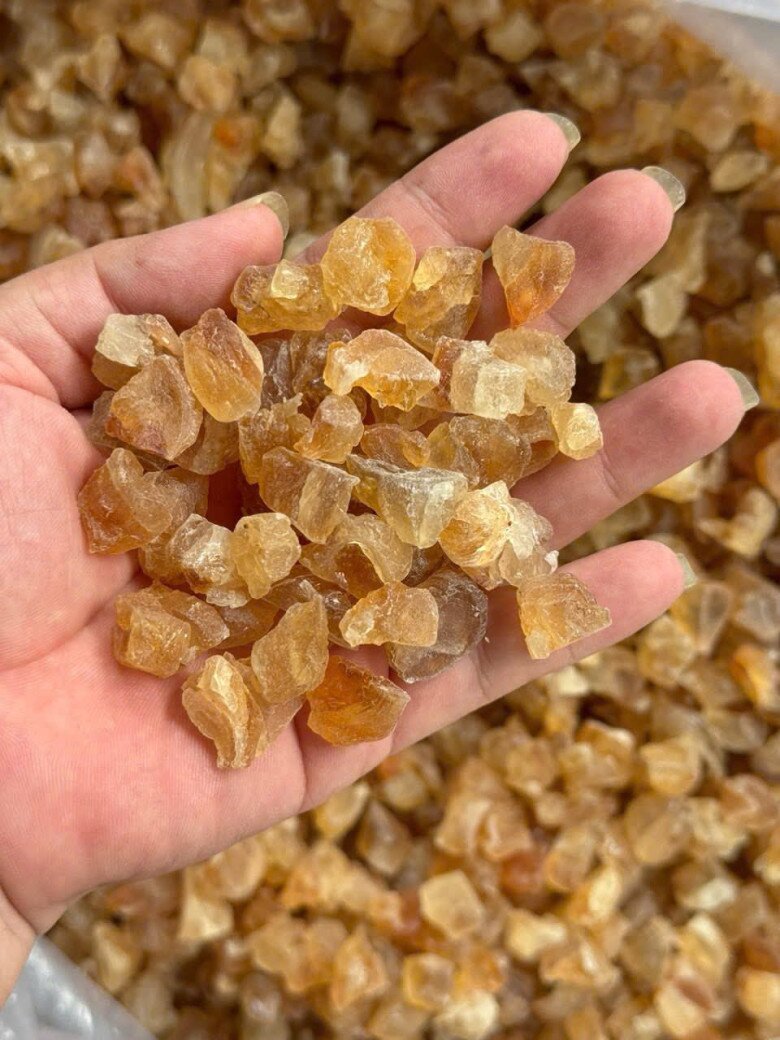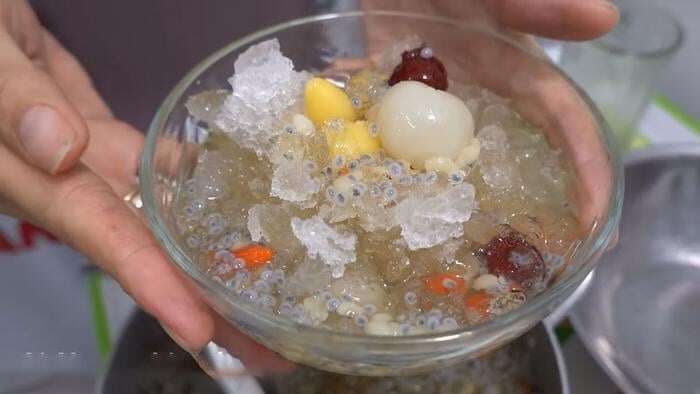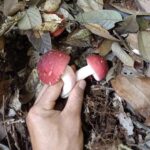
Sterculia foetida, or more commonly known as gum tree, is a unique tree that exudes a sap-like substance from its bark. This natural phenomenon has turned into a delicacy in Ninh Thuan, Vietnam, where the tree is most abundant. The sap, known as “mủ trôm” in Vietnamese, has become a renowned local specialty, putting Ninh Thuan on the map for food enthusiasts.
The process of harvesting mủ trôm is an art in itself. Locals with decades of experience shared that the best time to collect the sap is during dry and sunny days. Not only does this technique help the sap dry faster, but it also ensures its purity and quality. The drying method is just as crucial, influencing the final product’s texture and taste.

Harvesting mủ trôm is a meticulous task that requires skill and experience. Farmers typically start harvesting when the tree is between four and seven years old. They carefully scrape the bark and then make longitudinal cuts or drill holes in the trunk at various locations. After a few days, the sap starts to ooze out of these incisions and holes. To prevent the sap from falling to the ground or getting contaminated, nylon bags are placed around these areas to collect the pure sap. The fresh sap is then sun-dried in several batches over three to four sunny days.
Approximately a month later, the incisions and holes in the tree trunk heal, and the farmers can repeat the harvesting process. Every five to seven days, they collect the sap that has accumulated in the plastic bottles attached to the tree. After 20 days, the bottles’ positions are altered to allow the tree to grow undisturbed. Mủ trôm can be harvested all year round, except during the leaf-fall season, to ensure the tree’s sustainable growth.

Mủ trôm, in its purest form, is off-white, thick, and has a jelly-like consistency. It is most popularly used in desserts and beverages, providing a delightful crunchy and chewy texture. Mủ trôm is a healthier alternative to industrial jelly and tapioca pearls, making it a preferred choice for those seeking a nutritious treat. It pairs well with various fruits such as oranges and lemons or even nuts, creating refreshing and nourishing drinks. Before use, the dried mủ trôm is soaked, cleaned, and drained.

When purchasing mủ trôm, it is essential to discern its quality to avoid inferior or counterfeit products. Locals shared that the best mủ trôm is usually off-white, yellow, or has a pinkish hue. This freshly harvested sap quickly expands when soaked in water. Conversely, low-quality mủ trôm tends to be dull white or lumpy, indicating prolonged exposure to air, resulting in a hard texture that is challenging to soak and has an unpleasant sour taste.
Given its hygroscopic nature, mủ trôm continues to absorb water as it moves through the digestive tract. Therefore, consumers should ensure complete hydration before consumption. The ideal ratio is soaking 5 grams of mủ trôm in one liter of water for 12 to 24 hours, allowing it to reach its full volume.

Mủ trôm, with its distinctive benefits and flavor, has evolved from a regional delicacy to a sought-after summer refreshment. Its journey from obscurity to becoming a coveted ingredient underscores the hidden treasures within nature’s bounty. The story of mủ trôm is a reminder to cherish and appreciate the gifts that our environment so generously offers.



































